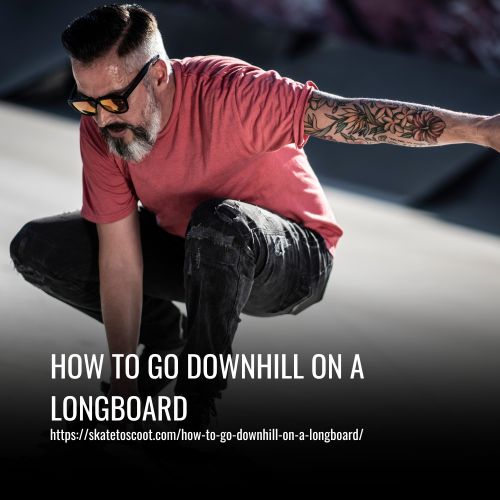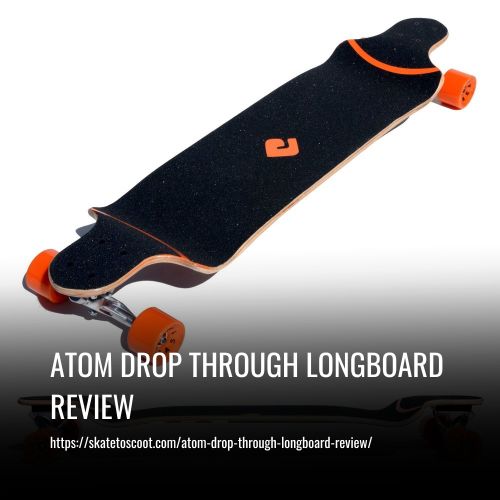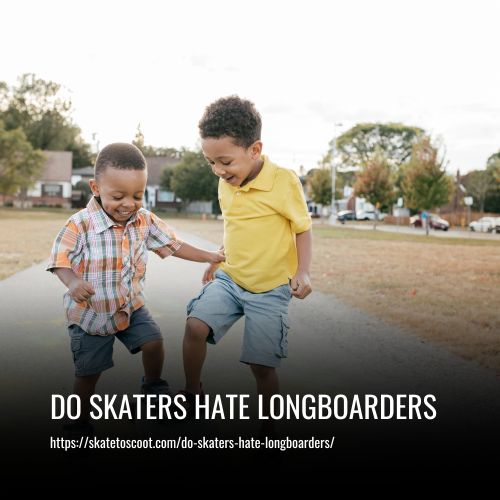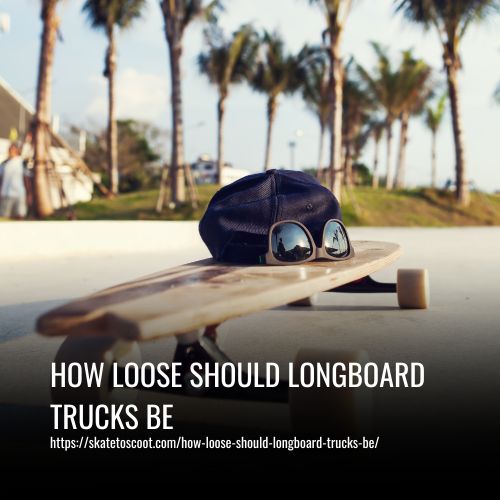As an Amazon Associate we earn from qualifying purchases.
Have you ever watched someone effortlessly glide down a hill on a longboard and thought, “I wish I could do that”? Well, you’re in luck because learning how to go downhill on a longboard is easier than you might think. Whether you’re a beginner or have some experience, this article will guide you through the steps to master the art of downhill longboarding.
First things first, let’s address the adrenaline rush that comes with cruising down a hill on a longboard. The feeling of wind rushing through your hair and the thrill of speed can be addictive. But before you embark on your downhill adventure, it’s important to learn the proper techniques and safety precautions to ensure a smooth and enjoyable ride.
In this article, we’ll cover everything from choosing the right longboard and protective gear to mastering the basic techniques and advanced tricks for downhill longboarding. So, strap on your helmet, tighten your trucks, and get ready to experience the exhilaration of going downhill on a longboard.

How to Longboard Down a Steep Hill
- Prioritize Safety: Remember, longboarding downhill can be dangerous, so always prioritize safety and know your limits. Ensure you have the right protective gear, such as a helmet, slide gloves, and knee and elbow pads.
- Learn How to Stop: Before you even begin rolling down the hill, it’s crucial to know how to stop your longboard in case of an emergency. The most popular and secure technique is foot braking. Remove your back foot from the board and slide it on the ground to gradually slow down and come to a stop.
- Balance Your Trucks: To avoid speed wobbles, which can cause instability and accidents, ensure that your front and back trucks are balanced. The front trucks should be slightly looser than the back ones.
- Tuck for Maximum Speed: “Tucking” is a technique where you crouch down on your longboard to reduce wind resistance and stabilize your body. This position allows you to achieve higher speeds while maintaining control. Practice maintaining a low, aerodynamic stance to improve your tucking skills.
- Stay Calm and Relaxed: While riding downhill, it’s essential to keep your body relaxed and loose. Nervousness and panic can cause tension in your muscles, affecting your board handling. Stay calm, confident, and focused to improve your downhill skateboarding skills and avoid injuries.
- Learn How to Fall Safely: Knowing how to fall properly can help you avoid serious injury when things don’t go as planned. Avoid using your hands to break your fall, as this can lead to hand and wrist injuries. Learn to roll with the fall and find a soft spot to land.
- Master Turning Techniques: At some point, you’ll need to make turns while longboarding downhill. Two techniques to help you navigate turns safely are foot stopping and pre-drifting. Foot stopping involves using your foot to slide and slow down before entering a turn. Pre-drifting is lightly drifting just before the turn to reduce speed and make the bend safely.
- Control Your Speed: Use your body weight and foot positioning to control your speed while going downhill. Carving techniques, which involve making S-shaped turns, can also help you slow down gradually.
- Be Fearless but Mindful: Lastly, remember that longboarding downhill can be both thrilling and risky. Once you have mastered the fundamental skills and techniques, believe in your abilities, and have the confidence to take on steeper descents. But always practice caution and remain aware of your surroundings.
By following these tips and continually practicing and improving your skills, you can safely enjoy the exhilarating experience of longboarding downhill on a steep hill.
What is special about downhill longboarding?
Downhill longboarding offers a unique and exhilarating experience that is unlike any other. Longboarders who pursue this discipline crave the adrenaline rush and intense moments that come with flying down a hill at high speed. The sensation of carving through the wind with maximum speed is highly addictive and can become a central focus in their lives.
What sets downhill longboarding apart is the shared passion and tight-knit community that it fosters. Downhill riders bond with each other across age groups, social status, and cultural backgrounds. They form a family, united by their love for speed and the thrill of the ride.
The dynamics of downhill longboarding also play a significant role. The rider’s body positioning, center of gravity, and equipment setup affect the overall experience. Steering and controlling speed becomes essential as riders navigate steep hills and tight turns.
Who is downhill longboarding for?
Downhill longboarding is not for the faint of heart, but it is also not just for reckless individuals seeking unnecessary risks. Serious downhill riders are highly committed, technical, and responsible sports enthusiasts who aim to push their limits. While mastery of advanced techniques is necessary, beginners can still get into downhill longboarding by acquiring prerequisite skills.
If you are serious, focused, emotionally controlled, and driven by adrenaline, downhill longboarding might be for you. It is not uncommon for “older” riders in their 30s and 40s to seamlessly blend in with younger riders when conquering big hills. Additionally, many middle-aged riders enjoy skating mellow hills regularly with their children.
Downhill longboarding prerequisites
Before attempting downhill longboarding, it is crucial to master some basic skills for speed control on your longboard. One essential technique is foot braking, which involves dragging your back foot onto the ground to slow down through friction. However, foot braking is only effective at moderate speeds.
Another prerequisite is learning how to turn and carve. By leaning onto one edge of your longboard, you can make it rotate to the left or right, allowing you to change direction. Carving involves making deep turns through heavier leaning and weight shifting, which helps reduce velocity and avoid dangerous speeds while going downhill.
Lastly, sliding is an advanced skill that allows you to slow down dramatically by pushing your longboard sideways across the slope, making your wheels skid. It is recommended to practice sliding on a flat surface or small slopes before attempting it on real hills.
Safety Equipment for Downhill Longboarding
Downhill longboarding can be an exciting and exhilarating sport, but it’s crucial to prioritize safety and take the necessary precautions to protect yourself. Here are some essential safety equipment and gear that every downhill longboarder should have:
- Helmet: Your head is the most vulnerable part of your body, so wearing a helmet is non-negotiable. Look for a helmet specifically designed for skateboarding or longboarding, and make sure it fits properly and securely.
- Slide Gloves: Slide gloves are specially designed gloves with hard plastic or Kevlar pucks on the palm that allow you to slide your hand on the ground for controlled braking and sliding. They provide protection for your hands and allow you to control your speed while maintaining stability.
- Knee and Elbow Pads: Falling at high speeds can lead to serious injuries, so wearing knee and elbow pads is vital. Look for pads that offer good impact protection and a secure fit.
- Closed-Toe Shoes: Your feet are also vulnerable while longboarding, so wear closed-toe shoes with good grip to prevent foot injuries. Avoid wearing sandals or flip-flops, as they provide inadequate support and protection.
- Full Riding Gear: Depending on your comfort level and personal preference, you may also consider wearing additional protective gear such as padded shorts, spine protectors, or wrist guards. These extra layers of safety can provide added protection during high-speed descents.
Remember, no matter how skilled you are, accidents can still happen. Having the appropriate safety equipment is essential to minimize the risk of serious injury and enjoy downhill longboarding safely. Always prioritize safety and know your limits before attempting challenging downhill descents. With the right gear and precautions, you can have a thrilling and safe experience on your longboard.
Longboard gear for downhill
When it comes to downhill longboarding, having the right gear is essential for safety and control. Here are the key components you need to consider when selecting gear for downhill longboarding:
- Downhill Deck: Choose a deck that is stiff enough to provide control at high speeds. Look for a length between 37″ and 42″ for stability and agility. Drop-through decks offer stability, while topmount decks offer responsiveness and control. Consider a dropped platform for a combination of both. Freeride boards can also be used for downhill, but make sure they have a directional shape for better performance.
- Downhill Trucks: Opt for reverse kingpin trucks as they provide better traction at speed. Choose truck width based on your deck’s width, typically going for 180mm trucks. The truck’s baseplate angle affects responsiveness and stability. Start with 50º trucks for a good balance of grip and stability. As you gain experience, you can experiment with lower degrees and adjust the kingpin tightness for more control.
- Downhill Wheels and Bearings: Look for wheels with good quality urethane, 70-72mm in diameter, and a sharp lip for traction and durability. Durometer (hardness) affects traction and wear, with 80A being a good starting middle ground. Break in your wheels to wear off the outer layer for better performance. Centerset wheels are ideal for sliding. Choose bearings with speed rings/spacers for added protection or invest in integrated spacer bearings for longer lifespan.
With the right gear, you can have a safer and more controlled downhill longboarding experience. Remember to always prioritize safety and wear appropriate protective equipment such as a helmet, slide gloves, knee and elbow pads, and closed-toe shoes. Practice and improve your skills gradually, starting with moderate speeds on less steep hills before tackling more challenging terrains.
A few tips for beginner downhill skaters
- Warm Up and Stretch: Before hitting the hill, it’s important to warm up your body and get loose. Take a few easy slides or laps to get familiar with your board and loosen up your muscles. Dynamic stretches can also help prevent stiffness and improve your overall performance.
- Wear Protective Gear: Falling is inevitable when learning a new skill, so it’s crucial to wear proper protective gear. Invest in knee pads, elbow pads, and hip pads that offer both protection and comfort. Quality gear will not only keep you safe but also enhance your skating experience.
- Choose the Right Wheels: When starting out, opt for icy, round-lipped freeride wheels. These wheels are durable and easy to break out into slides, making them perfect for beginners. They may not provide as much control initially, but they help build fundamental skills. Once you feel more confident, transition to slightly less round-lipped, grippier wheels for better slide control.
- Avoid Cheap Gear: Investing in quality gear is essential for an enjoyable and safe downhill skating experience. Cheap wheels, trucks, decks, and protective gear can hinder your progress and even pose risks. Opt for reliable brands that offer high-performance equipment, ensuring a smoother ride and better value in the long run.
Remember, as a beginner, it’s important to take it slow and build your skills gradually. Practice on moderate-speed hills and always prioritize safety. Be patient, stay consistent, and enjoy the ride!
FAQs
Downhill longboarding can be dangerous if proper safety measures are not followed. Wearing protective gear, practicing on moderate slopes, and gradually increasing speed can help reduce the risk of accidents.
Safety gear for downhill longboarding includes a helmet, knee pads, elbow pads, and slide gloves. These protective items are crucial for minimizing injuries in case of a fall or a speed wobble.
Downhill boards are specifically designed for speed and stability. They often have top-mount decks, which provide better control and grip. They are also equipped with wider trucks and softer wheels to enhance stability and reduce vibrations.
There are various techniques to control speed while downhill longboarding. The most common method is foot braking, where the rear foot is dragged on the ground to gradually slow down. Experienced longboarders also use slides and carves to maintain control and reduce speed.
Speed wobbles occur when the board starts to shake uncontrollably at high speeds. To prevent speed wobbles, ensure your longboard has tight trucks and a stable setup. Additionally, practicing good balance, maintaining a proper riding style, and gradually increasing speed can help reduce the likelihood of speed wobbles.
Conclusion:
Mastering the art of going downhill on a longboard is an exhilarating and empowering experience. It may take time, practice, and a few falls, but the thrill and sense of freedom are well worth it. So, grab your longboard, embrace the rush of the wind in your hair, and let gravity guide you on an adventure like no other.
Remember, the only way to truly go downhill is to take that first step and let the journey unfold beneath your wheels. So, gear up, push off, and enjoy the ride!
Amazon and the Amazon logo are trademarks of Amazon.com, Inc, or its affiliates.



